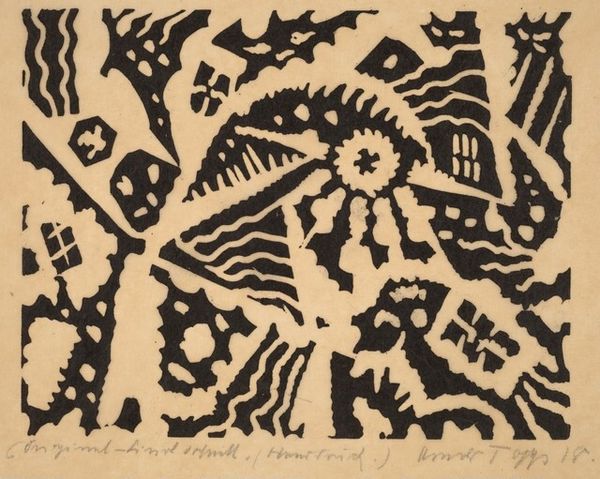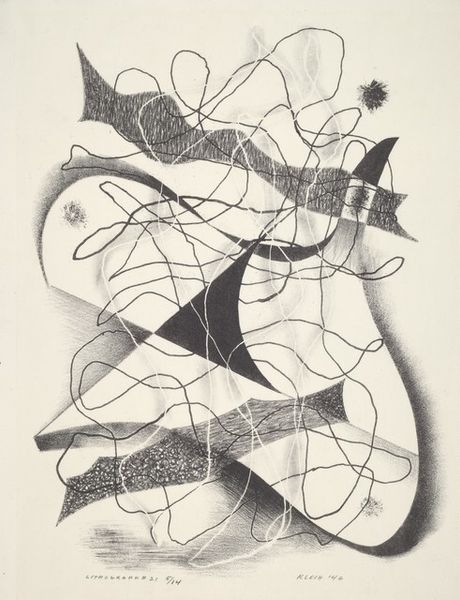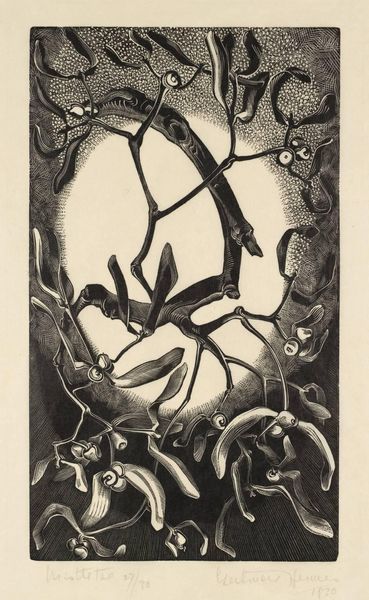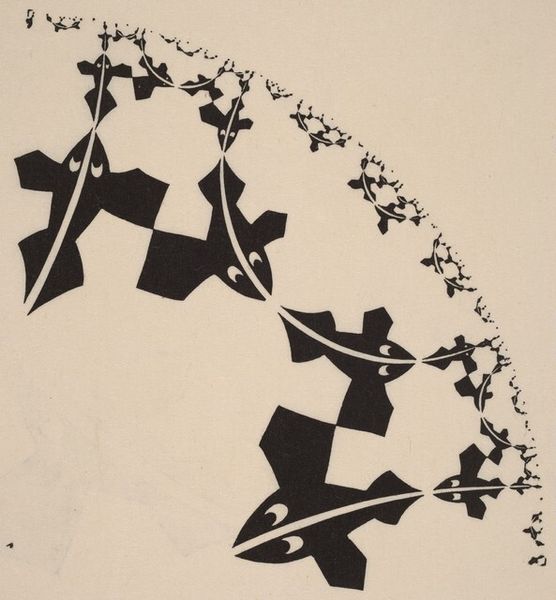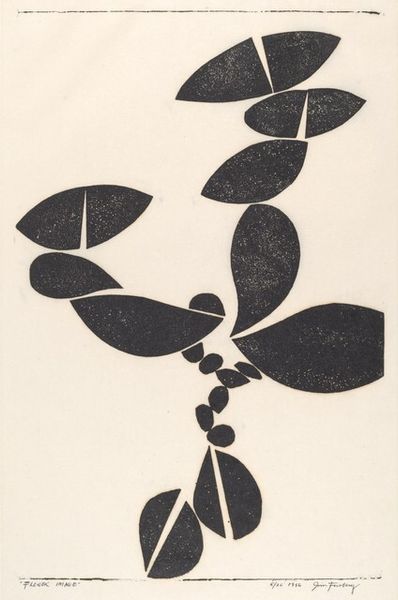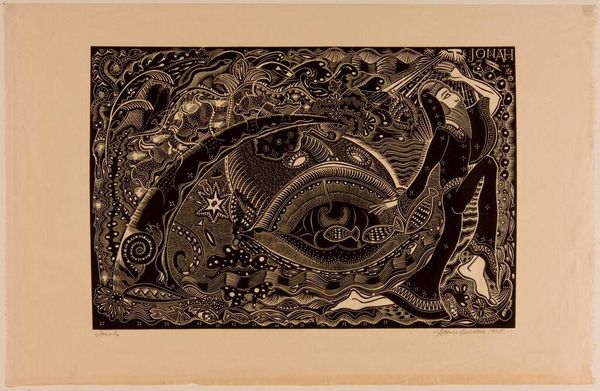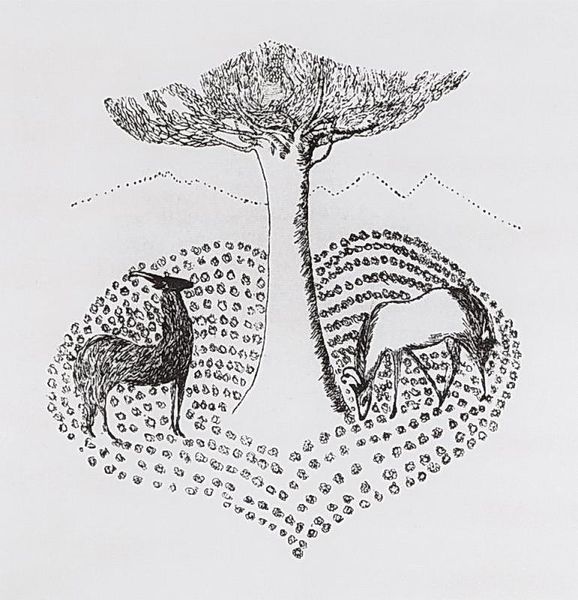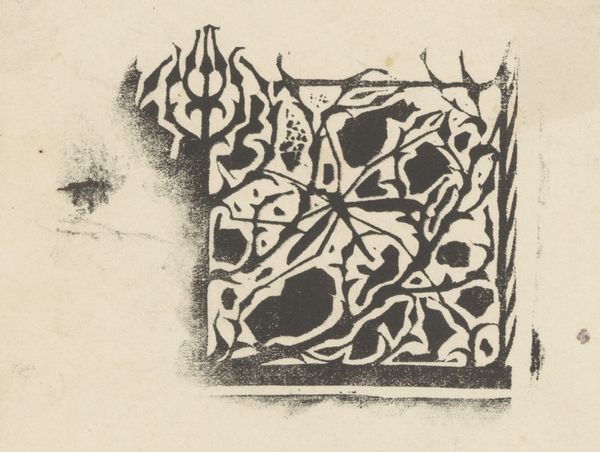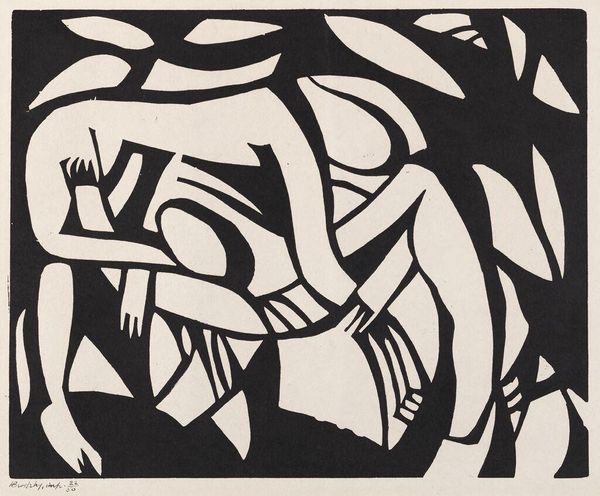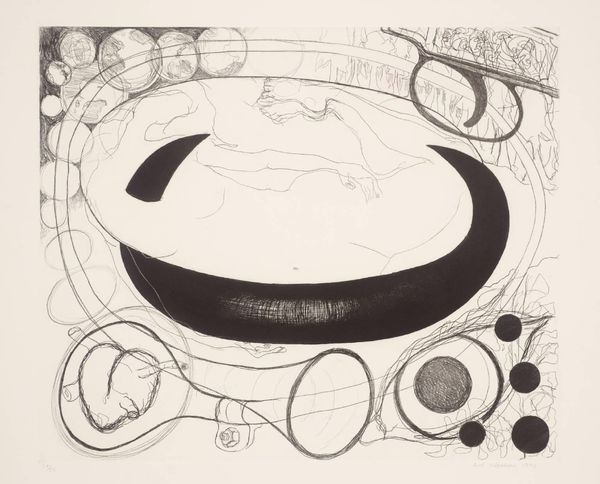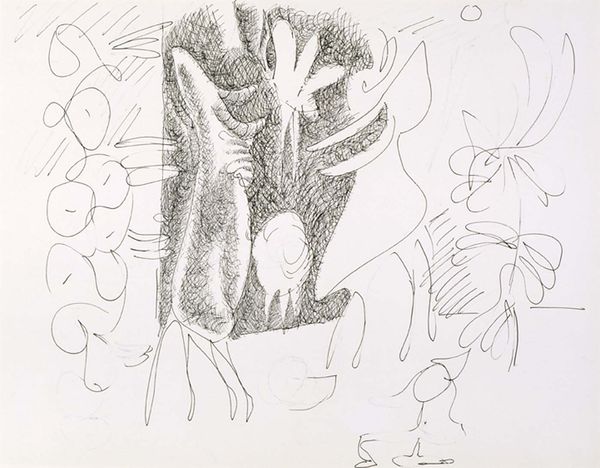
# print
#
figuration
#
geometric
#
abstraction
#
line
#
modernism
Dimensions: sheet: 32 x 31 cm (12 5/8 x 12 3/16 in.)
Copyright: National Gallery of Art: CC0 1.0
Editor: Here we have M.C. Escher's "Circle Limit III" from 1959, a print dominated by geometric forms. It’s quite mesmerizing, almost hypnotic, with this repeating fish motif shrinking towards the edge. What is your interpretation of Escher's visual structure here? Curator: The lithograph compels us to observe the intrinsic characteristics of art, specifically the interplay between geometry and figuration. Observe the meticulous arrangement of tessellated fish figures. How do these repeating motifs relate? Editor: They diminish in size, creating a sense of infinite recession towards the boundary of the circle. Is this a reflection on mathematical concepts? Curator: Indeed. We note the non-Euclidean geometry at play here, most visibly rendered through the curved lines and hyperbolic space. Escher's approach asks us to focus less on what it *represents* and more on how he uses formal elements to construct the piece. Are we compelled by its internal logic? Editor: Absolutely! It’s fascinating to see mathematics expressed through art, and how the lines dictate form within a visual framework. Curator: And conversely, how representational form can test our intuitive sense of geometrical constraints and expectations. Editor: I see it as a reminder that perception is never absolute. The structure can challenge assumptions. Thanks! Curator: Indeed, that inherent quality should remain open for speculation. The structural integrity facilitates this exploration.
Comments
No comments
Be the first to comment and join the conversation on the ultimate creative platform.
